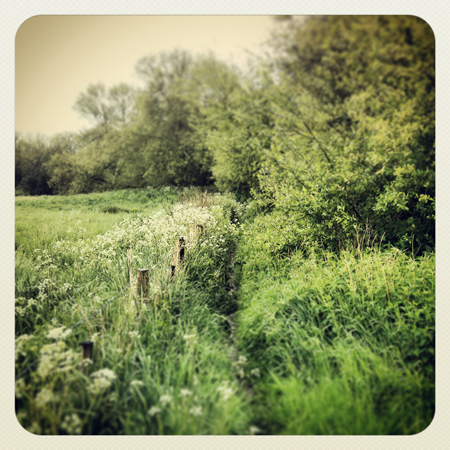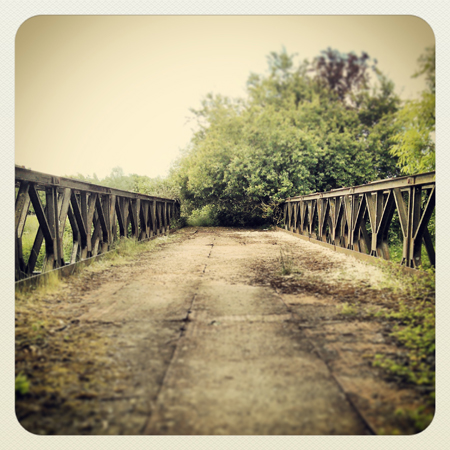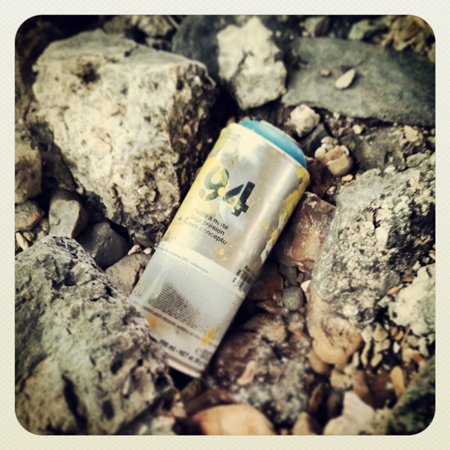Far from here, that’s my aim -Kafka
A few months ago on a blustery spring day under sombre grey skies I attempted a ramble along the River Loddon. It should be noted that this post is partially about an abandoned day out and also a brief analysis of a film that I feel encapsulates this futility. The journey was to be towards a rural pub called The Land’s End which is nestled next to a treacherous ford across the river in the sleepy Berkshire countryside. What should have been a simple quest amusingly turned out to be a rain drenched failure. The imposition of unexpected geographic forms upon the winding waterway’s line proved to be a rather tricky test of my wits. I’d been reading Geoff Dyer’s book Zona about Tarkovsky’s seminal 1979 Russian science fiction film Stalker, so the damp miasma of the leaden English weather seemed rather appropriate.
Stalker is a famously bleak yet seductive wandering epic that follows three shambling characters attempting to reach a mystical Room at the heart of a forbidden Zone. With this in mind I set off, foolishly umbrella-less and keen to see where the zig zag pathway along the river led. Departing Virilio’s city which lies ‘in favour of a hyper centre that has no tomorrow’, I rapidly made my way eastwards along the pathways of suburbia to the starting point where the river glides past the abominably ugly blunt façade of the Winnersh Showcase cinema. Beyond here it slides underneath a mighty Victorian crimson railway bridge and then between the twin concrete roadways of the A329(m), their lofty support columns wrapped in bright graffiti, luminous amongst the grimy pigeon infested twilight of the under croft.

Pillar graffiti, image author’s own.
The massive Ballardian pillars quickly give way to leafy edgeland and thanks to the increasingly cold drizzle of the rain I found myself alone pacing alongside the river and passing wind sculpted foliage. The slide from the banal and urban to the rural and expansive echoes that of the inquisitive characters in the film Stalker. The Stalker character (of the title) is hired to escort a professor and writer in order to locate a powerful Room, rumoured to grant any visitor their true desire. It lies within the aforementioned Zone, a realm beyond the polluted Soviet city-state that has walled off this otherworldly place from visitors. The location defies rational explanation and exists due to an unspecified incident which has warped time and space. The protagonists manage to evade guards and flee though monochrome industrial detritus to find themselves in a lush green idyll devoid of other humans. The Stalker has been to this mysterious locale before and embraces its raw essence with glee. Unlike the Berkshire pub I wished to find, the Room at the core of the Zone has only a vague location and to illustrate this the gorgeously tarnished cinematography of the film mixes dreamscapes with reality. Dyer alerts us to this bewitching weirdness by noting that ‘their dreams merge into the actual depiction of the journey, which is in any case all but indistinguishable from a less literal spiritual journey. Time dissolves’. We watch as the camera tracks the emotions of the walkers as they pick their way through the tangled ruins, their linear narrative apparently collapsing in on itself. The work is loosely based upon the novel Roadside Picnic by Arkady and Boris Strugatsky who surmised ‘there really is no time in the zone’. The film describes to us the possibility of an experiential place outside logic or reason, a feral utopia of the mind. Of course it is impossible to watch now without thinking of the subsequent sadness of Chernobyl, of a slow atomic meltdown and the cancerous ruin porn of the skeletal town of Pripyat. Though it should be noted that prior nuclear disasters at the Mayak Reprocessing Centre inspired the initial novel.
Abandoned spray can, image author’s own.
I skirted the edge of Dinton Pastures, a jumbled collection of former gravel pits now reformed as a country park where families splash about on boating lakes and silent fishermen patiently lurk in the trees. The path here had been consumed by tall nettles as the ebullient meadows erupted in greenery. The river to my left had now widened, its soft banks contained by dense wiry undergrowth and dead trees fractured by winter gales. Occasionally I spied faint structures along the river’s edge, outlines of moss covered concrete and control gates long since abandoned. Appropriately, when considering the film, Dyer quotes Wordsworth’s keen observation of an abandoned cottage, ‘I see around me here, things which you cannot see’. The ruination alludes to more poetical matters, it becomes an artefact for envisaging suitable metaphors and noting the passage of time.

Ruined structure, image author’s own.
It is impossible to calculate dates when watching the film, all manner of shapeless wrecks litter the militarised borderland and even the festering architecture within the Zone is ambiguous, explorers can only relate to the space utilising phenomenological methods. I strode on, hacking my way through towering plants, the rain now approaching the sluicing volumes of that found in a rainforest as its spray cascaded off glossy leaves and boughs, with the river as a constant companion.

Overgrown path, image author’s own.
My mind returned to the legendary Room, a sodden chill helping to focus thoughts of the destination. It is both symbolic of the Stalker character’s desire to question his bizarre occupation and a literal end point for the perambulators. Dyer observes that the notion of the Room ‘opened them to the mythic significance of certain places and landmarks, to the events that are indistinguishable from the place where they occurred’. This is psychogeography manifest. I would argue that it’s the exemplary film of the genre: neatly combining aspects of urban decay, wanderlust, otherworldly structural arrays, bunkerlogy, cryptoforests, philosophy, documentary infused cinema, spatial investigations, dystopia, hauntology, navigation, feral wildlife, futility, mythology and supernatural strangeness into a singular mass of hypnotic scenes. My own journey towards the hostelry was frustratingly cut short, unbeknownst to me the worn footpath by an old mill had been blocked by a neon utility van so as the torrent streamed down my glasses I couldn’t spot the stile and thus had to turn back cursing the lack of shelter.

Fenced off branch line bridge, image author’s own.
On a much brighter spring day we attempted the ramble once again, this time to be foxed by the splitting of the River Loddon into old and new paths. Further into the countryside it is tamed by castrated branch line bridges, thick woodlands and ochre fields of bright crops, but eventually we came upon a winding lane and could not source a clear route though the farmland that spread out before us. Once again the ford had eluded my grasp, so frustrated we turned back mirroring Rilke, remembering that ‘all the home of my instinct, all my inward origin is there’. The cantankerous agents in the film do ultimately reach their goal of the Room, though invariably things are not quite what they first think. I cannot go into any more detail without spoiling it so will only add that the action eventually returns to the slate grey of the factory world outside the Zone. The film ends with the Stalker character’s young daughter Monkey filmed in vivid colour observing a glass on a table and it seemingly moving of mysterious accord (perhaps hers) whilst a narrator intones a love poem by Fyodor Tyutchev (used by Bjork on her Volta album).
I love your eyes, my dear
Their splendid sparkling fire
When suddenly you raise them so
To cast a swift embracing glance
Like lightning flashing in the sky
But there is a charm that is greater still
When my love’s eyes are lowered
When all is fired by passion’s kiss
And through the downcast lashes I see the dull flame of desire
-Fyodor Tyutchev
The extraordinary skills of the child indicates that the Zone has apparently leaked its arcane otherness into normality. Space in the film has a plasticised presence with its own dark character as if it is itself conscious, forming what Sukhdev Sabdhu describes as ‘a place of encounter that repays curiosity’. Visitors to this extraordinary location discover that ‘the moment is uninhabitable just like the future (Octavia Paz), Stalkers apparently absorb or are damaged by their frequent occupation of the Zone and become liminal beings. The film makers themselves were allegedly injured by the toxic filth that spewed from the Tallinn chemical works located upstream of the putrid sets used by Tarkovsky. The lethal embrace of reality mercilessly copied that of the fictional and illusive Zone. Thankfully however the River Loddon has crystal clear water and a lavish abundance of wildlife instead and it should be noted that my own half hearted journey left me far from my own Zone! One of the most beautiful and beguiling moments in the film occurs when Stalker is seen sleeping on a ledge surrounded by shimmering water. Bathed in nostalgic golden hues he is approached by a gentle black dog that comes to rest by his fragile and prone figure, Stalker has finally come home to his interior realm at peace with the flux that flows within. Richard Hugo says ‘if I could find the place I could find the poem’, for Stalker the Zone is that place, a gossamer heterotopia of pathways shaping a rich song line of wanderlust. As for me, well the river beckons once again.




As a total Stalker fan your list of the themes of the film is a brilliant summary of why I love it. I haven’t read Dyer’s book yet – someone put me off it, but I guess I should. Your photos could be Tarkovsky Polaroids, especially the overgrown path. Glad to know you are persevering with the walk but psychogeography can be bad for your health you know! Very enjoyable post, Matt.
Very kind! Dyer’s book is very hit and miss, at times rather thoughtful and other times utterly annoying, self referential and shallow. I enjoyed it simply for the sheer breadth of silly commentary, but you aren’t missing anything if it passes you by.
So did you make it to the pub?
On another day we did…
Very interesting post. I’ve walked a lot around here myself. Over that bridge you picture is a wonderfully deserted tract of land beyond which one reaches a branch of the Loddon called the Old River, where I once sat for a peaceful hour or so and watched kingfishers fishing at very close quarters.
The bridge itself, which has always held a fascination for me, not least on account of what is reached upon crossing it, does indeed look like it used to carry a branch line, but are you sure this is the case? I haven’t seen anything else in the landscape or on the OS map to indicate that there was once a railway here, and searching online I can’t find anything about a defunct branch line there.
A meditation on Tarkovsky’s film makes for an evocative juxtaposition with an area of land that I’ve always felt is imbued with a mysterious sense of somehow tainted bucolia.
The area towards the beginning of your walk, where cinema and car park and underpass and river and footpath meet, is full of resonance for me.
I haven’t watched Stalker for a few years. Waiting for the right time.
Thanks David very kind, do you still pass through this area? I think there’s a couple of those bridges, they are so solid I lazily assumed they had been branch lines at some point. We didn’t have the nerve to cross the barred off bridge, but that would explain how to best walk to the pub! I have grown to love that landscape simply as it forms the intersection of so many differing uses and natural veins. Stalker has so much depth it is certainly worth re-watching, it has been copied by so many others, the Zone has leaked everywhere.
Yes, on occasion. I think the last time I was down that way I went to the cinema to a weekday daytime screening of Steve McQueen’s film Shame. It is of course very rare for one of those multiplexes to show any sort of art film, and indeed there was nobody else there besides me, and one couple, who perhaps hadn’t realised what they’d come to see.
But yes, it’s a resonant area. The long road that leads to that intersection from near the University – not the dual carriageway but the older road – has an appealingly timeless, nostalgic quality to it, especially in summer.
Once, wandering in that area for perhaps the first time, I emerged from some scrubby woodland to find myself standing before an actual post-WWII fighter plane. I had emerged out the back of what I subsequently discovered was the Berkshire Aviation Museum, but at the time it appeared as a startling and enigmatic apparition that felt in keeping with the Ballardian feel of the whole area.
If you are ever passing say hi! Oh, I can imagine that such a director would not attract much attention at that blockbuster location. The aviation history of the area is fascinating even if it has since all been turned to sprawling red box housing. You are right, it’s a strange land, all those differing zones clashing against one another at the suburban edge.
I think you should always be destined never to reach Lands End! Great how you have weaved ruminations on ‘Stalker’ with your own (abandoned) journeys. Photographs compliment the text perfectly. Did you ever manage to visit the pub? Great stuff and thanks Matt.
Thanks very kind, we got to the pub in the end via another route! It’s worth it simply to see cars attempting to traverse the gushing ford and often retreat!
Wonderful post and very resonant for me as I’m currently thinking and writing about Chernobyl and its ‘symbolic fallout’. There are so many strange connections between the original Stalker film and how Chernobyl has been represented since the accident (for example, workers in Chernobyl’s zone are commonly referred to as ‘stalkers’ & there’s a series of computer games set in Chernobyl and named after the film). Thanks for posting!
Thanks, you have wonderful material on this area, Chernobyl is the king of desolation and ruin porn, the sadness has almost become a cliché of sorts so it is hard for me to not be influenced by this lingering tragedy. How is your work going?
I’m not familiar with the film Stalker but your recounting of your own journey and the accompanying pictures have certainly peaked my interest. Great reading and certainly evokes memories of my own wanderings around similalry sounding landscapes…. thanks for sharing.
Thanks, mystery nom de plume person, very kind. It’s worth watching as the Zone has influenced so much!
Hi Matt
This is wonderful eerie psychogeography, evoking the strangeness of the city. What particularly struck me is the resonances between 1960s urban architecture and the monolithic fading grandeur of soviet-era communist states. your photos could easily have been taken in Poland or Bulgaria twenty years ago. In such places, I have often been struck by the way that human architecture turns its back on the countryside, alien and aloof.
Thanks for provocative ideas, as ever
Ian
As always you are too kind! You are also right in that architecture fails when it turns its back on nature, that false aloofness which I suppose is ultimately folly. Concrete is surprisingly resilient though, so I imagine the lingering weirdness of the Zone’s world will certainly always be around to surprise us?
Matt,
A nice ramble there – and I especially liked the photos you shot. I’ll have to track down Zona and/or Stalker someday….
Thanks Dave, Stalker is definitely worth the effort.
Had Joy Division’s Radio Live Transmission playing in my head as I read your post. Hadn’t thought about Stalker in psychogeographic terms before. Were you thinking of Tarkovsky’s gun / stream tracking shot when you saw the discarded spray can?
To be honest it was more like a fluid coincidence, but the general grey ambience of the ramble slotted nicely into the rain swept mood. There are so many lovely fragmentary shots in Stalker which are utterly compelling.